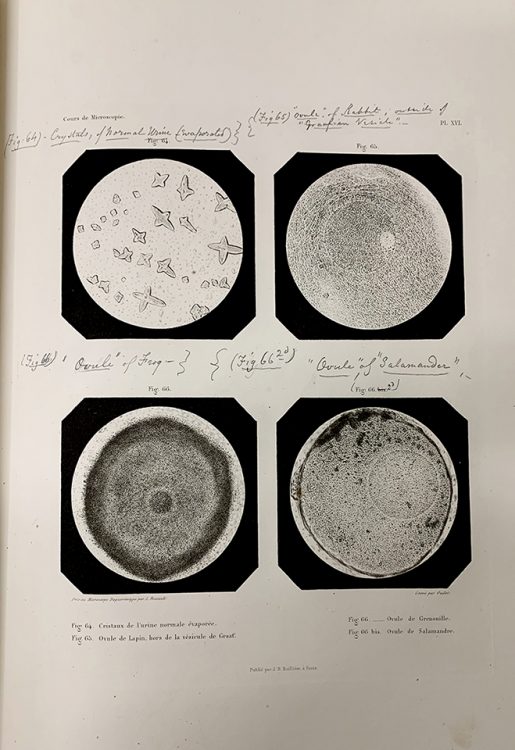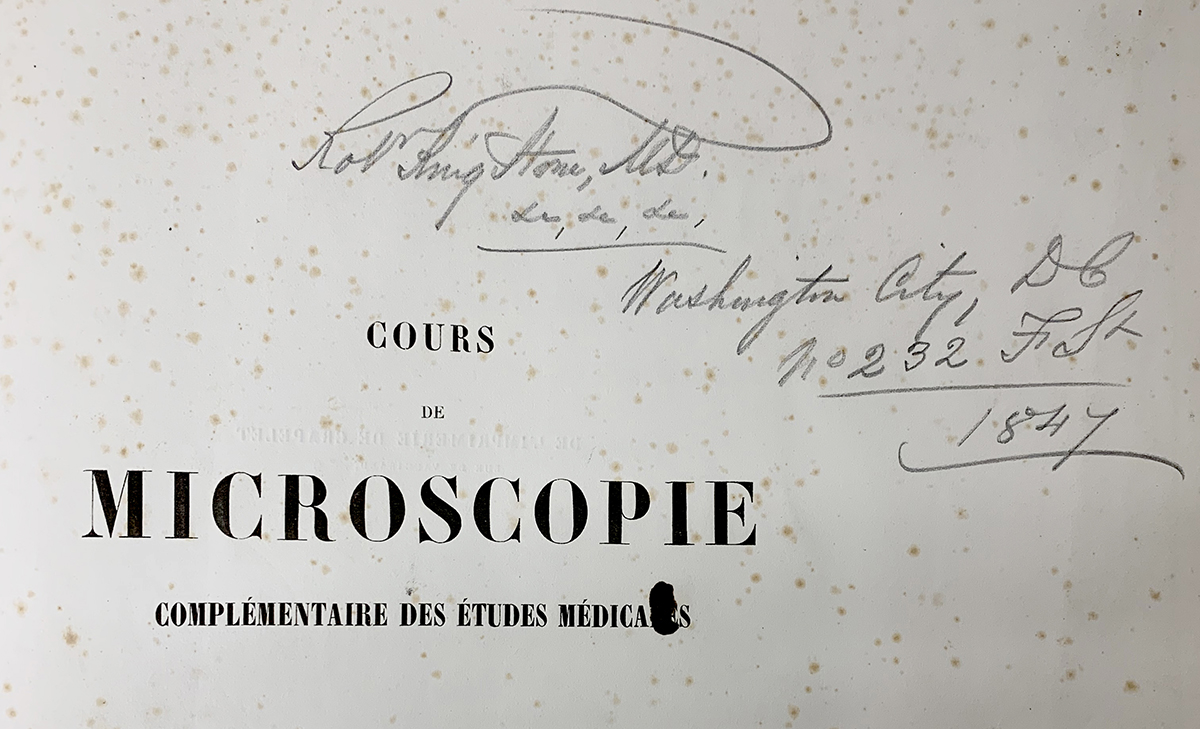 When I selected Alfred Donné’s Cours de microscopie complémentaire des études médicales, anatomie microscopique et physiologie des fluides de l’économie: atlas exécuté d’après nature au microscope-daguerréotype (Paris: J.B. Baillière, 1845) as the next feature for the Treasures from the Rare Book Room series, I was certain it would be solely about the book’s novel illustrations. It turned out that this book has a link to Abraham Lincoln!
When I selected Alfred Donné’s Cours de microscopie complémentaire des études médicales, anatomie microscopique et physiologie des fluides de l’économie: atlas exécuté d’après nature au microscope-daguerréotype (Paris: J.B. Baillière, 1845) as the next feature for the Treasures from the Rare Book Room series, I was certain it would be solely about the book’s novel illustrations. It turned out that this book has a link to Abraham Lincoln!
When this book appeared in print, the daguerreotype was cutting-edge technology. This was a new process for photographic images and was introduced to the public in 1839. However, French bacteriologist and physician Alfred Donné immediately recognized the usefulness of photography in microscopic observations. In 1840, he produced the first images under the microscope using this technique. Over the next several years, he refined the method with the help of his assistant, Léon Foucault, and published his Cours de microscopie complémentaire des études médicales [Course of microscopy complementary to medical studies] in 1844 (text) and in 1845 (atlas). The atlas is illustrated with 80 images rendered from the micro-daguerreotypes taken by Foucault, magnified up to 400 times and then reproduced via a more traditional way—engraved plates—by French engraver Oudat. Thanks to the use of photography, we have an objective view of blood cells and crystals when examined under a microscope, unaltered by the hand of an artist. Donné also gave us the first description of leukemia linked to blood pathology (text volume, 1844). Leukemia was acknowledged as a new disease a year later. This atlas is a landmark in hematology and medical microscopy.

The library’s copy also has unexpected attributes that led to the discovery of a previous owner. Purchased in 1941, it is bound in a rather dull library binding. The paper shows foxing throughout the volume. In addition to novel illustrations, the atlas has handwritten notes on almost all plates, which are English translations of the French labels with references and occasional notes, and is signed and dated. Upon the closer inspection, these notes reveal an exciting provenance. The atlas belonged to Robert King Stone, a physician practicing in Washington, D.C. beginning in 1847. He served President Abraham Lincoln. Stone was among the physicians present at Lincoln’s deathbed as well as during his autopsy. What a surprise, we have a book with notes from the doctor who treated Abraham Lincoln!
Please send inquiries to the History of Medicine.
~Gosia Fort